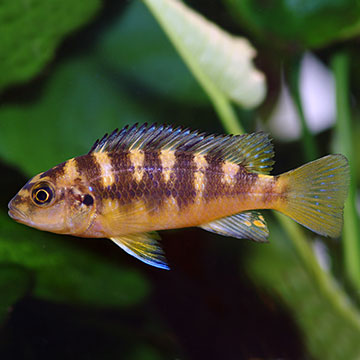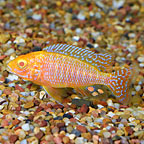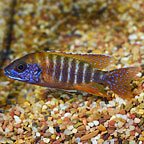
Quick Stats
What do these Quick Stats mean? Click here for more information
What do these Quick Stats mean? Click here for more information
Overview
The Bumblebee will do best in a cichlid community aquarium. Provide numerous rocks and caves and a sandy bottom with plenty of places to set up territories. A laterite-based substrate is ideal for this system as it will help to maintain the necessary high pH and alkalinity.
For best results in spawning, the males should be kept with at least three females. The female will spawn on a flat rock and will take the unfertilized eggs into her mouth and will follow closely behind the male until he releases the sperm to fertilize the eggs. The female will tend to the eggs for approximately three weeks before releasing the fry. The fry can then be fed newly hatched brine shrimp, daphnia, or crushed flake food.
The Bumblebee Cichlid should be fed foods rich in vegetable matter such as flake, pellet, and leafy seaweeds. Their diet should also be supplemented with meaty plankton-rich foods such as brine shrimp and bloodworms.
Approximate Purchase Size: Less than 1-1/2"









